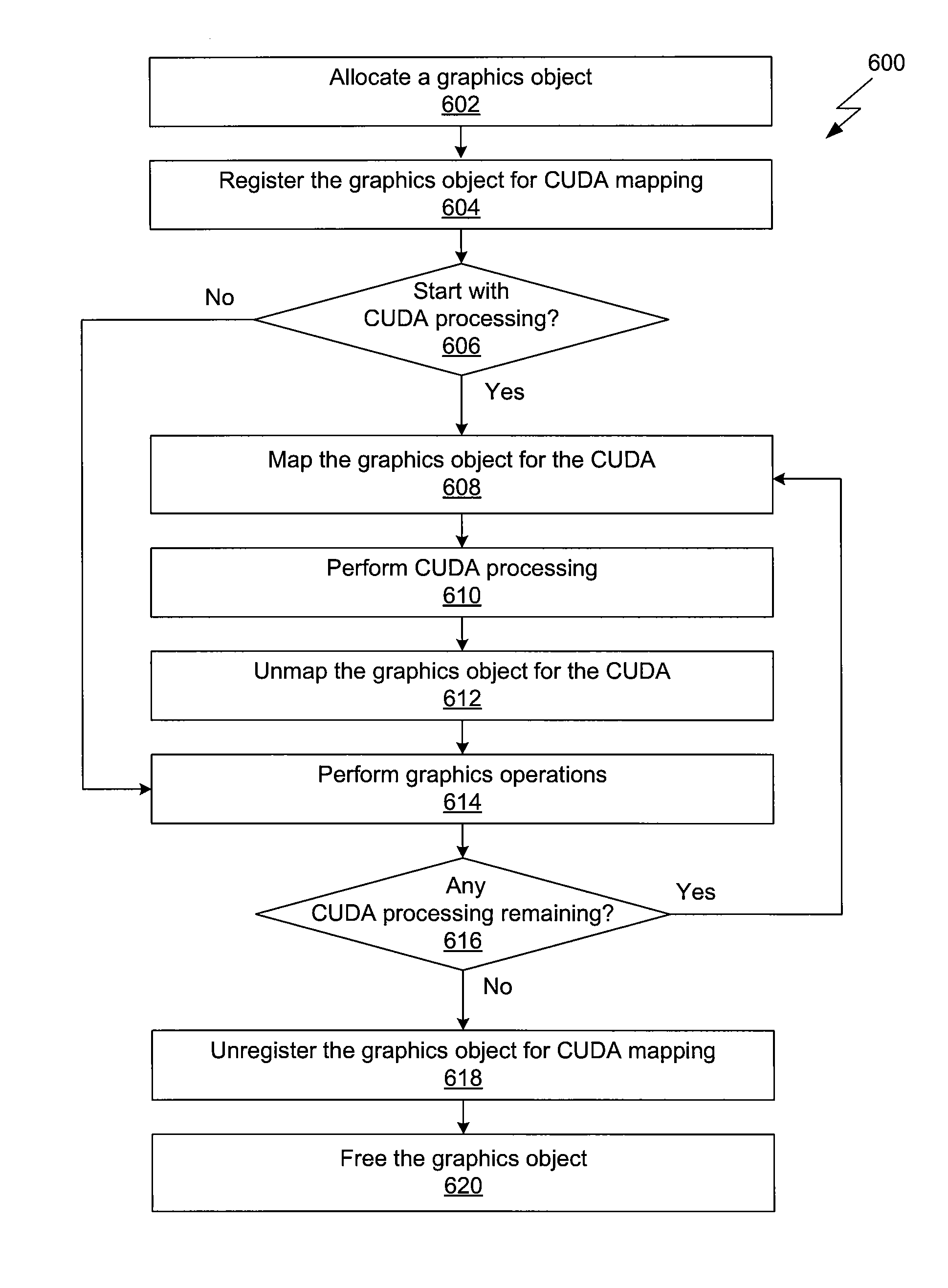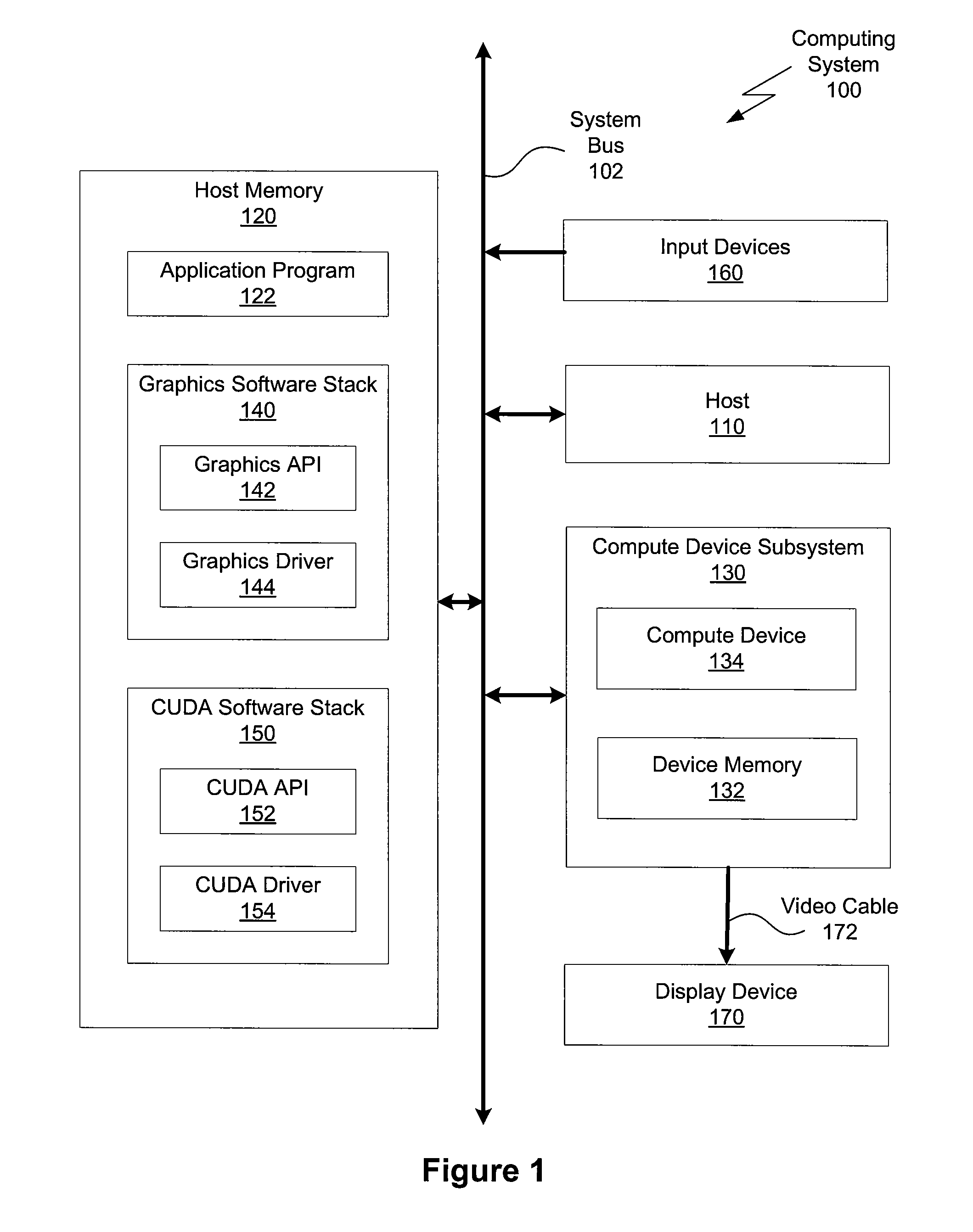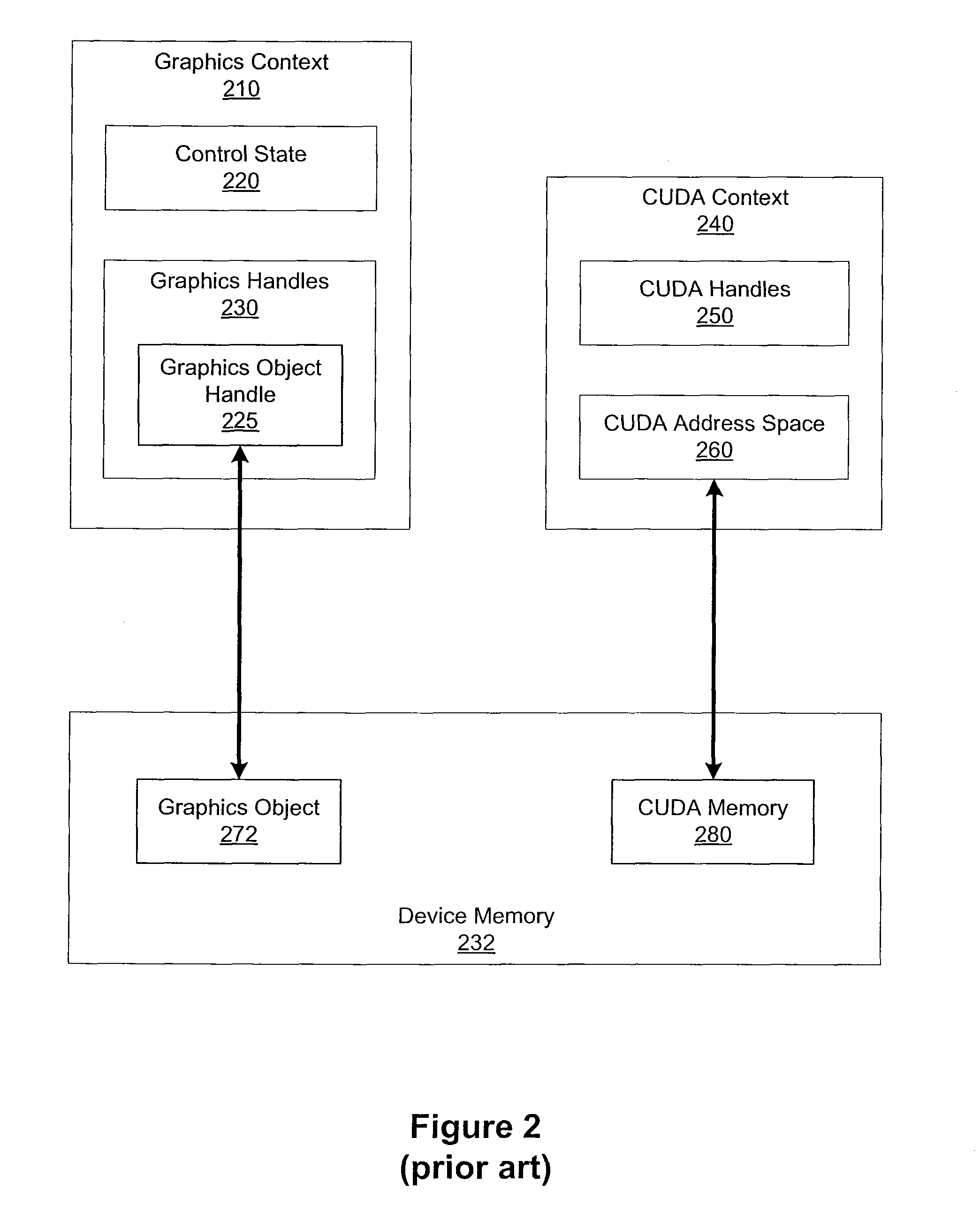System and method for enabling interoperability between application programming interfaces
a programming interface and interoperability technology, applied in computing, instruments, electric digital data processing, etc., can solve the problems of reducing the speed with which the host and compute device execute the application program, hindering the overall system performance, and limiting the types of tasks that the compute device can perform, so as to ensure efficient access to the graphics object
- Summary
- Abstract
- Description
- Claims
- Application Information
AI Technical Summary
Benefits of technology
Problems solved by technology
Method used
Image
Examples
Embodiment Construction
[0019]FIG. 1 is a conceptual diagram of a computing system 100 in which one or more aspects of the invention may be implemented. As shown, the computing system 100 includes a host 110 (e.g., a central processing unit), input devices 160, a host memory 120, a compute device subsystem 130 (e.g., a graphics processing subsystem), and one or more display devices 170. In alternate embodiments, the host and portions of the compute device subsystem may be integrated into a single processing unit. Further, the functionality of the compute device subsystem may be included in a chipset or in some other type of special purpose processing unit or co-processor. In some embodiments, the computing system may include more or less than one compute device subsystem. Communication paths interconnecting the various components in FIG. 1 may be implemented using any suitable bus or point-to-point communication protocol(s), and connections between different devices may use different protocols as is known ...
PUM
 Login to View More
Login to View More Abstract
Description
Claims
Application Information
 Login to View More
Login to View More - R&D
- Intellectual Property
- Life Sciences
- Materials
- Tech Scout
- Unparalleled Data Quality
- Higher Quality Content
- 60% Fewer Hallucinations
Browse by: Latest US Patents, China's latest patents, Technical Efficacy Thesaurus, Application Domain, Technology Topic, Popular Technical Reports.
© 2025 PatSnap. All rights reserved.Legal|Privacy policy|Modern Slavery Act Transparency Statement|Sitemap|About US| Contact US: help@patsnap.com



